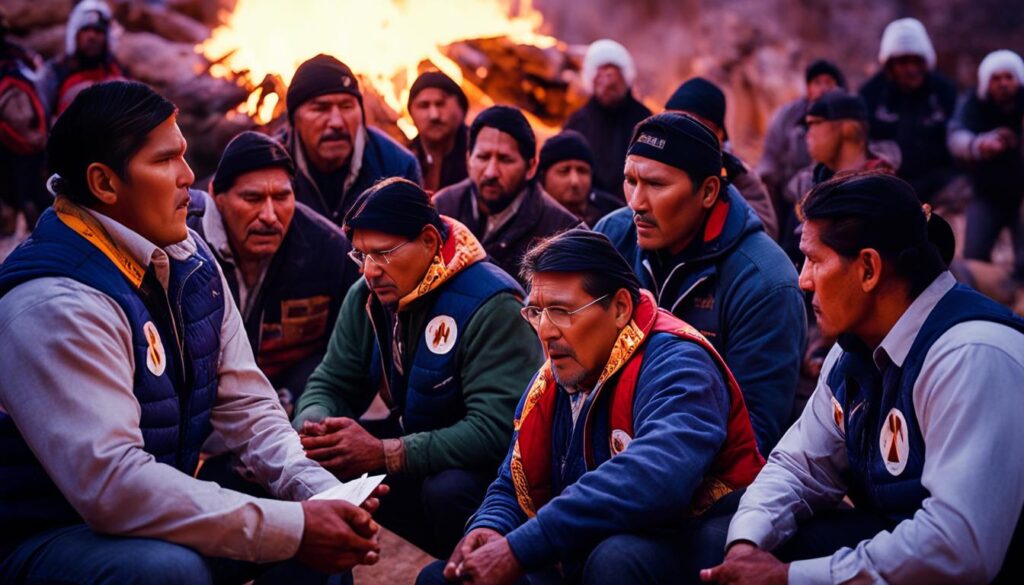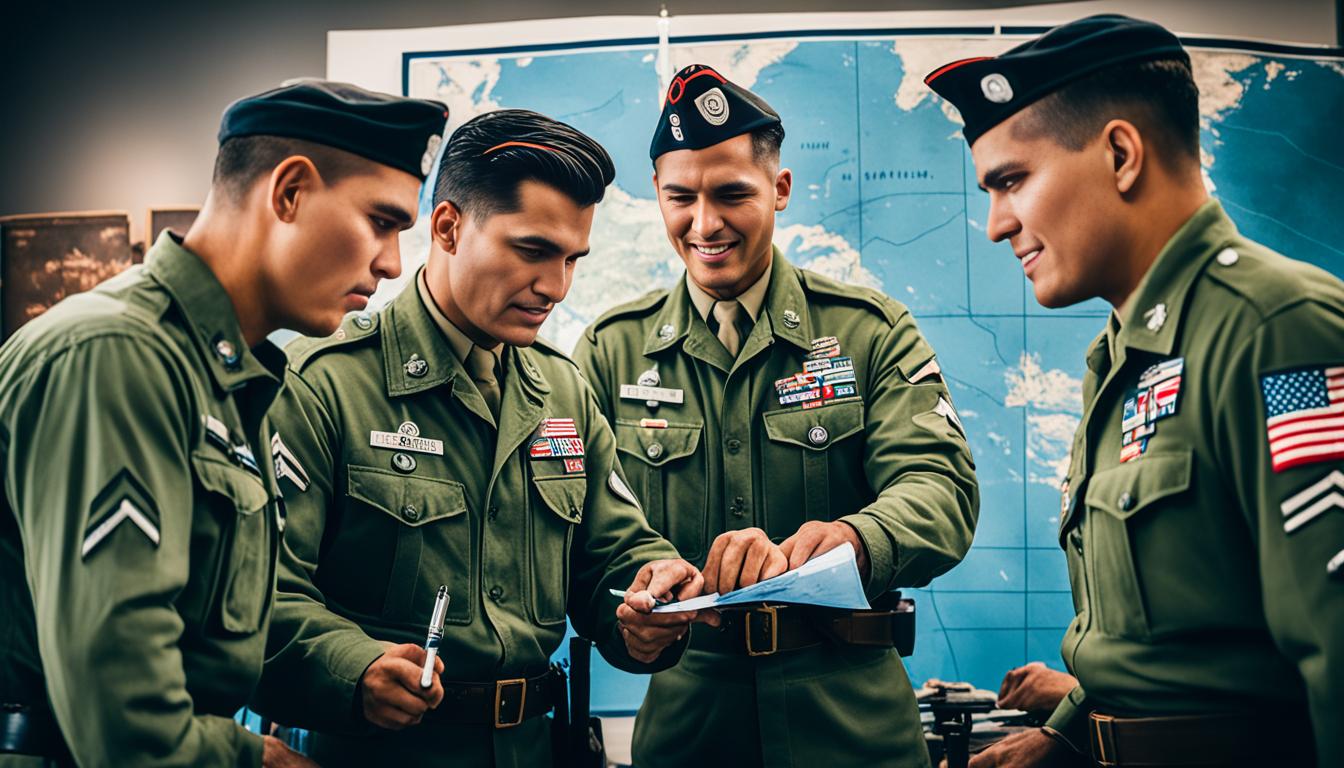During World War II, the U.S. military employed an unbreakable code based on Native American languages to send secret communications on the battlefield. The most famous of these were the Navajo code talkers, but at least 14 other Native nations served in this capacity in both the Pacific and European theaters.
The concept of using Native Americans fluent in their traditional language and English to transmit encoded messages was first tested in World War I with the Choctaw Telephone Squad and other indigenous communications specialists. Many of these code talkers found irony in being asked to use their Native languages to fight for America, as they had been forced to attend schools that punished students for speaking their native tongue.
The Navajo code talkers and other Native Americans played a crucial role in secure World War II communications for the U.S. military. Their unbreakable codes, based on indigenous languages unknown to the enemy, allowed for the transmission of sensitive tactical information that helped lead the Allies to victory.
Key Takeaways
- Navajo code talkers used their native language to send secret U.S. military messages in WWII
- At least 14 other Native American tribes also served as code talkers in the Pacific and Europe
- The code talker concept was first tested in WWI with the Choctaw Telephone Squad
- Many code talkers found irony in using their language after being punished for speaking it in American schools
- Native American code talkers were crucial to secure communications that helped the Allies win WWII
The Origins of the Navajo Code Talker Program
In 1942, Philip Johnston, a civil engineer fluent in the Navajo language, proposed the idea of using Navajo as a code language for secure military communications to Major General Clayton B. Vogel of the Marine Corps. Johnston believed that the complex and unwritten nature of the Navajo language made it an ideal choice for encoding sensitive messages during wartime.
To demonstrate the feasibility of his concept, Johnston recruited four Navajo men living in the Los Angeles area. Together, they successfully translated, transmitted, and decoded a classified message faster than the Marine Corps’ existing cryptographic methods. Impressed by the results, General Vogel recommended the recruitment of at least 200 Navajos to establish a dedicated code talker program.
In May 1942, the Marine Corps began actively recruiting Navajo men at the Navajo Agency in Fort Defiance, Arizona. The first group of 29 Navajo recruits arrived at Camp Elliott in San Diego, California, in September 1942, marking the official establishment of the Navajo Code Talker Program. These pioneering recruits embarked on an intensive training program to develop and master the Navajo code that would become instrumental in securing Allied victories in the Pacific Theater during World War II.
Training and Development of the Navajo Code
The Navajo recruits first underwent rigorous basic training at the Marine Corps Recruit Depot in San Diego before being assigned to the Field Signal Battalion at Camp Pendleton’s Training Center. These dedicated individuals faced the challenge of not only becoming Marines but also developing a complex code that would prove invaluable to the war effort.
An initial group of 29 Navajo recruits took on the task of devising Navajo words for military terms that were not part of their native language. They also provided alternate terms for frequently repeated letters in English, ensuring the code’s security and effectiveness. This groundbreaking work laid the foundation for the Navajo code’s success in the Pacific Theater.

The code talkers faced the daunting task of memorizing both the primary and alternate code terms, as the use of printed material was strictly limited due to security concerns. This memorization process was a testament to their dedication and mental fortitude, as they committed the complex code to memory to ensure swift and accurate communication on the battlefield.
As the war progressed, the Navajo code talker program grew in numbers. By August 1943, a total of 191 Navajos had joined the Marine Corps, with estimates placing the total number of code talkers between 375 and 420 individuals. These brave men played a crucial role in the success of numerous campaigns, their unique skills and unwavering commitment proving invaluable to the Allied war effort.
Navajo Code Talkers in Combat
After completing their training, the Navajo code talkers were deployed to the Pacific theater and assigned to various Marine combat divisions. They played a crucial role in transmitting classified communications during numerous battles and campaigns throughout the war.
The code talkers typically worked in pairs within their assigned military units. One would operate the portable radio, while the other would relay and translate the messages. Their work was incredibly dangerous, especially in the Pacific, where Japanese forces would often target radiomen. To ensure the safe transmission of messages, the code talkers had to keep moving constantly.
The Navajo code talkers were instrumental in the Allied victory during World War II. They were present at many significant battles, such as the Battle of Iwo Jima, where their contributions were invaluable. Major Howard Connor, a Marine Corps signal officer, famously stated, “Were it not for the Navajos, the Marines would never have taken Iwo Jima.”
The code talkers’ bravery and dedication to their mission were essential in ensuring the success of Allied operations in the Pacific theater. Their unique skills and the unbreakable code they developed and utilized played a vital role in securing victory against the Japanese forces during World War II.
Legacy and Recognition of the Navajo Code Talkers
Despite their invaluable contributions to the war effort, the Navajo code talkers were sworn to secrecy about their work and received little fanfare upon returning home. The code talker program remained classified until 1968, and national recognition was slow to come. It wasn’t until 2001 that Congressional Gold Medals were finally awarded to the Navajo and other Native American code talkers for their heroic service.
The Navajo code talkers overcame significant obstacles and helped bring about positive changes within the Navajo Nation and their communities. Approximately 461 Navajo Marines served as code talkers during the war, with 13 making the ultimate sacrifice. Today, fewer than five Navajo code talkers remain, but their legacy continues to inspire.
In recent years, the United States and the Navajo Nation have taken steps to properly honor these Native American heroes. In addition to the Congressional Gold Medals, August 14 has been designated as National Navajo Code Talker Day. The declassification of the program has allowed their stories to be told, ensuring that future generations will remember the crucial role these brave men played in securing victory in World War II.

Leave a Reply